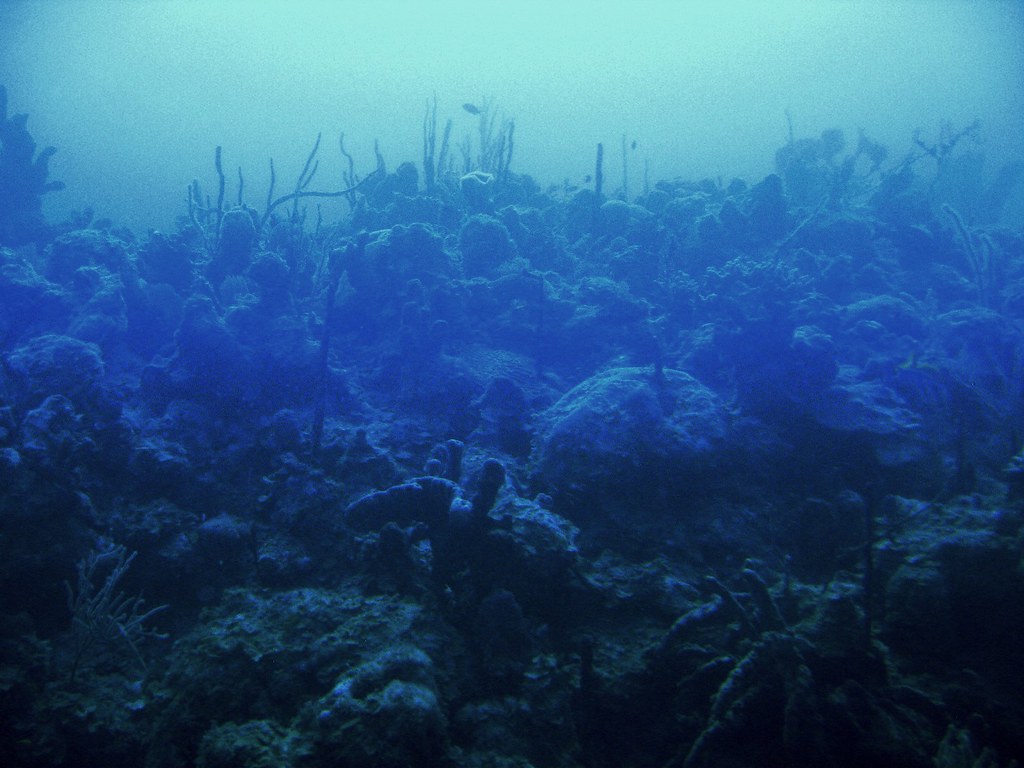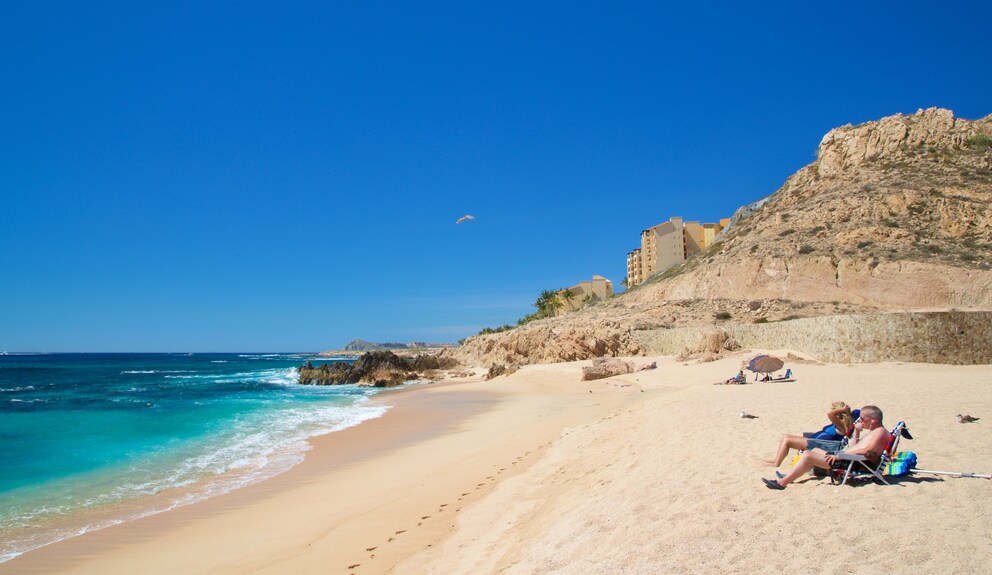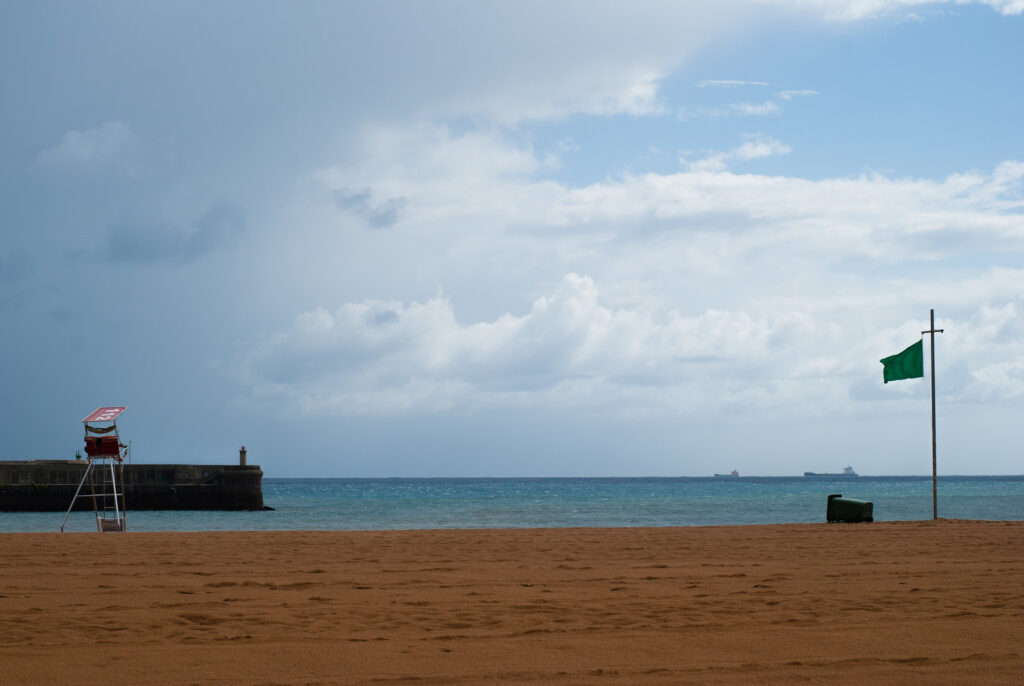5 min read
Why Are Some Beaches in Cabos Not Swimmable? (Dangers & Safe Areas!)
Explore why some Cabos beaches are not for swimming due to rip tides, steep drops, strong waves, and dangerous marine life, and find safe areas for fun.

Rip tides are a natural ocean occurrence worldwide, and they can be intense with strong currents of water that move from the beach outwards to the ocean. Where the ocean meets the sand, rip currents, weather, waves, and other movements can also create drastic shifts in the sand below a swimmer's feet.
The reasons some beaches in Cabos are not swimmable include dangerous rip tides, uneven underwater shorelines, massive waves, and an overabundance of dangerous marine life. The waters around Cabos are dangerous in some spots, which can cause injury and even death in inexperienced or expert swimmers.
In Cabos, the sand slopes can be vast and sudden. One minute a swimmer is on sure footing, the next they’re not and struggling. Rip tides and the drastic slopes below the water can cause tremendous waves crashing toward swimmers.
The delicate ecosystem below the waters can also have an abundance of jellyfish and sea urchins that can harm swimmers.
Rip Tides

Rip tide currents are very intense, strong currents of water that move outwards from the beach area towards the ocean. These currents can pull people along with them and, if strong enough, be fatal. They are a natural occurrence throughout the world with varying degrees of strength.
In some cases, expert swimmers have been pulled away. Not every beach has strong rip tide currents, but some do and are not swimmable.
Steep Drops

Steep drops in the ocean floor happen everywhere in the world. Shifts and steep drops happen due to rip currents, waves, weather, and due to changes to the water’s surface. This is quite common in Cabos; swimmers might be standing on even sand for one minute and then slip down five feet with the next step they take.
This creates a dangerous environment where injury and fatalities are more likely to happen for everyday swimmers. To swim, individuals must move out a certain amount into the water. The further a swimmer goes, the more likely they will encounter this problem.
Strong Waves

On the Pacific side of Cabos, waves can be unpredictable and deadly. The waves in Cabos are unique and more dangerous than in some other areas due to the geographical dynamics of this area.
What lies above the earth and beneath the sea afflicts the waters that surround this area. The weather and earth patterns can be unpredictable along the San Andreas Fault.
Everything works hand and hand in nature, and with the shifting sand beneath and deep, intense rip tides, dangerous waves can happen at certain beaches and times. While this may not be as much of an issue for a seasoned, expert surfer catching some waves, the everyday swimmer might struggle.
Related Read: 20 Best All-Inclusive Resorts in Cabo San Lucas
Jellyfish and Other Dangerous Marine Animals

Anyone who visits the beach anywhere knows there are sea creatures beneath. They exist from the lowliest sea star to the unsuspecting crab and frightening jellyfish. So visiting a beach requires a level of disregard or avoidance, leaving some refusing to dip their toes in the water.
Still, some areas, including Cabos, have an overabundance of sea creatures. Some of this marine life is harmless and, often, stunningly beautiful, like sea coral. Sadly, this area also has an overabundance of sea urchins and jellyfish.
While one or two of these sea creatures here and there might not be such an issue, too many of them can make it difficult, if not dangerous, to swim. Some beaches in Cabos have an abundance of marine life, including the less desirable sea urchins and jellyfish.
To protect swimmers and water sports enthusiasts, it's best to keep water activity on beaches that are fairly free of these creatures. It can be a fine line between protecting the safety and health of Cabos visitors and allowing them to enjoy the beaches.
No Lifeguards Available

Many beaches in Cabos don't have lifeguards. This issue can happen for a variety of reasons but most often occurs due to a lack of qualified and knowledgeably trained staff. Being a lifeguard is like any other occupation. It requires skill, training, certification, and willingness to secure the position.
Across the continent, some beaches require lifeguards to ensure the safety and health of the swimmer that frequent those beaches. In every city, including Cabos, there can be a struggle to ensure enough staffed lifeguards to protect the public in their daily swim and water adventures.
If this happens in Cabo, they will close beaches or make the safest beaches available to visitors while closing the other beaches. Those beaches that are closed one day, week, or month may not always be closed. Nor does the lack of skilled lifeguards mean the waters are not swimmable. It means there is no protection if someone decides to swim or play in those waters.
Knowing this, it can be tempting to find a spot on a secluded beach and enjoy the day, but this can be dangerous. While the posted flags help locals and visitors determine which beaches are swimmable, using a beach that seems swimmable but has no lifeguard can be dangerous to everyone in the group.
What Are the Non-Swimmable Beaches in Cabo?
Various beaches throughout Cabos are not swimmable, including the tourist zone and San Jose de Cabos. These beaches offer many other features, like surfing for experts, photography, and studying nature, wildlife, and beauty.
Divorce Beach

While on the Pacific Ocean side, you will find Divorce Beach. This beach isn’t swimmable because there is a dangerous undertow. This beach neighbors Lover’s Beach on the Pacific Ocean side.
Related Read: Best Time To Go To Cabo
Pedregal Beach

Also located on the Pacific Ocean, this beach is pristine and inviting but not swimmable. The beach has various issues making it dangerous, including a strong undertow, harsh currents, and dangerous waves.
Playa Solmar Beach

With the strong shore break and dangerous currently intense currents, this beach is also not swimmable. It, too, is located on the Pacific Ocean side.
Hotel Beach

This beach is stunning and offers a beautiful backdrop for other on-sand activities. Due to the undertow, it’s not swimmable.
Related Read: 20 Best Beaches in Mexico for Families
Estuary Beach

Convenient to Hotel Row, this beach is not swimmable due to the intense waves and strong undertow. It can be a great spot for watching marine life and birds as it’s close to a freshwater lagoon.
Monuments Beach

Expert surfing is allowed on this beach, and it has some beautiful rocky terrain to explore, but beyond that, the waters are unsafe to swim. Even the most experienced need to take caution.
Related Read: Do You Tip at All-Inclusive Resorts?
El Tule Beach

This beach is for expert surfers only. No swimming is allowed due to fast swells in both directions and the strong break. It might be a nice spot for some photos with all the driftwood and natural sand debris.
What Are the Swimmable Beaches in Cabo?
Many beaches are swimmable in Cabos, including Medano Beach, which gives the green light for all water sports activities. Some beaches allow swimmers to swim and do other activities with caution. Swimmers should be watchful for potential dangers that could come up during their adventure.
Medano Beach

Located conveniently to all the major Cabos attractions and fun this beach is safe, calm, and, of course, loaded with lots of people. No restrictions exist on this beach as the water is safe. For this reason, the beach is often crowded with people.
Cannery Beach

For some secluded energy and to get close to the locals, this beach is small and not too crowded. It’s a perfect spot for any water activity but doesn’t have any of the tourist traps that some other beaches do. It’s a great spot to go kayaking too.
Lover’s Beach

This beach is unique in how visitors gain access to it close to the El Arco stone arch. Beautiful and clean with safe waters for sports and swimming, you have to take a water taxi from Medano Beach to and from access.
Widows Beach

This beach is the perfect spot for photos, exploring, and water activities, including swimming. Beautiful rock formations, lovely tide pools, and secluded coves provide a diverse beach experience for kids, adults, and couples.
Santa Maria Beach

This beach is the perfect location for families with children. Noted as a marine sanctuary, it boasts numerous tropical fish and provides a diverse beach experience. The waters are clear and safe for all water sports.
Tequila Cove

As a manmade cove, it’s a perfect spot for all water activities and for all visitors. The waters are a bit calmer here than other areas.
Chileno Beach

One of the best spots for families and underwater explorations, either via snorkeling or diving, this beach is a lot of fun. Diverse marine life exists in these waters; most importantly, they are safe for all water activities.
Punta Palmilla

This secluded beach cove is perfect for anyone who loves water sports and swimming. The beach area is safe, clean, and private.
Why Is the Water So Rough in Cabo?

The reason why the water is so rough in Cabos is the location. Located at the tip of Baja, California, Cabos and the Sea of Cortez lie over the ever-fluctuating San Andreas Fault. The continual shifts and movements under the water create unpredictably above the water.
The waters are dangerous and rough; while many beaches have swimmable waters, there are just as many that do not. Like the weather, the tides and sand beneath the water are victims of whatever is going on with the earth. It makes a beautifully scenic area great for surfers, but swimming and other water play can be dangerous.
The area is a geographical wonder of the world that formed millions of years ago. Cabos sits at the southern tip of the Baja, California peninsula. Jutting out into these waters makes its waters rough and dangerous but beautiful.
Is The Ocean in Cabo Dangerous?

Yes, the Ocean in Cabos can be dangerous. This is due to Cabo's location at the southern tip of Baja, California. This location juts out with the Pacific Ocean at one side and the Sea of Cortez at the other. The waters can be dangerous due to the rough waters, out-of-control waves, strong riptides, and seafloor. The sea floor is unpredictable at best, with various spots where it dips down suddenly.
Those individuals with expert experience in swimming, diving, and surfing may have less of a problem navigating these waters, but there is always the chance that they could have problems too. Many experienced water enthusiasts frequent this area for its beautiful waves and diverse marine life. They also have more knowledge of what to do when in a dangerous situation.
Every beach, even some of the safe ones can become cautionary or dangerous at any moment. One thing to always remember is to respect the ocean and sea and never panic. If inexperienced, stick to beaches that have a lot of people and plenty of lifeguards.
Who Deemed Cabo Beaches Unswimmable?

State and local governments are those that declared Cabo beaches unsafe for swimming. These government officials evaluate complex issues with the waterways that surround our continent. They study marine bacteria and problems with the earth below the sea. They also keep watching weather patterns.
These officials will study the area the beach is located. They will review the details of its history and what is currently happening in the local environment.
In Cabos, the local and state government officials will work with local weather centers. They will contact experts studying volcanoes, earthquakes, and other weather patterns. Along with their own, there are people who work for the government and do not, who study the patterns of the waves, the rip tides, and how the sea floor flows.
All this information is compared and helps determine if a beach is swimmable. These individuals periodically study this information and the continued changes and patterns to determine the safety or dangers of every beach in Cabos. They will also study bacteria, viruses, and other important information about each beach and area.
How Do You Safely Swim in Cabo?

The way you safely swim in Cabos is by consulting with the local hotel or resort you are staying in when you check-in. Learning which beaches are swimmable and not is forever a changing thing. One day a beach might be swimmable, and then it could change, particularly with cautionary beaches.
Beaches deemed swimmable on a given day will post a green flag. These beaches are safe for all water activities unless otherwise noted.
It’s always good to consult each day before going out for a water adventure. Aside from that, pay attention to local signs and information posted about the beaches. Local officials will post information or tell whether a beach is swimmable or not and if that changes.
Finally when choosing a beach to swim, stick to the ones that have lifeguards. Lifeguards are employed for a specific purpose, and those beaches they watch are considered safe by local and city officials. They are the safest on that day and will usually have the most people.
Some beaches are more secluded, offering privacy and a more peaceful afternoon for some beachgoers. That isn't a problem, and those beaches are also swimmable, but if there is no lifeguard on duty, it's best to avoid the beach altogether.
How Do You Tell if You Can Swim at the Beach You Visit in Cabo?

The best way to tell for sure if you can swim at a beach you visit is in Cabos if you see a green flag on the beach. Local officials and staff regulate the beaches and waterways by a green flag on swimmable beaches. These local, city, county, and state officials will regularly determine the safety of Cabos's beaches.
As information changes for whatever reason, lifeguards or other employees will change the flags to reflect which beaches are safe daily or weekly. Since weather patterns and other issues can crop up suddenly, these flags can change daily and sometimes throughout the day.
Consulting the locals or resort and hotel staff can be a great resource, but they may not have the most accurate information available from moment to moment. Another way to know that you can swim at a beach you visit in Cabos is if there is a lifeguard.
Lifeguards are posted on swimmable beaches to protect and keep watch of swimmers and their safety during their beach visits. If there isn't a lifeguard on duty, it could mean that the beach safety has changed or it's not a swimmable beach.
Flags can change from Green to Red, and you are arriving when it hasn't been done yet. Best to avoid that beach and move to another; better to be safe than sorry.
Again it goes without saying if the beach is empty and no one is in the water, it's probably not a swimmable beach in Cabos, regardless of the flag. As humans, we make errors, and that green flag could not have been changed yet. Still, there is the possibility that it is a swimmable beach, but without that lifeguard sitting at their post, it's not worth the risk.

































































































